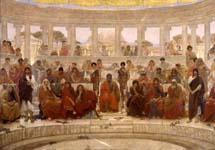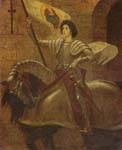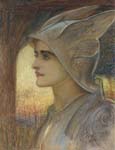William Blake Richmond
Paintings



A Figure on Sand Dunes before a Cairo Mosque



Adam and Eve Expelled from Eden


An Audience in Athens During Agamemnon by Aeschylus

An Umbrian Threshing Floor Near Rocca Sant' Angelo


Aphrodite between Eros and Himeros



Brooke Westcott , Bishop of Durham



Charlotte Foster, the artist's wife





Drapery Sketch for the Dancing Figure in the Procession of Bacchus at the Time of the Vintage


Electra at the Tomb of Agamemnon


Female Figure with a Red Turban

Female nude leaning on a table


Five studies of a female nude leaning on a table and seated with a lute


Hera in the House of Hephaistos



Joseph Lightfoot , Bishop of Durham



Lieutenant Colonel Charles Edward Bignold

Lord Arthur Charles Hervey , Bishop of Bath and Wells






On the slopes of Subasio, near Carceri


Orpheus returning from the Shades,



Phaeton and the Horses of the Sun


Portrait of Anna Maria 'Nettie' Jameson, nee Davies



Portrait of Etthel Bertha Harrison
 Portrait of Henry Dawson Greene Of Slyne And Whittington Hall, Lancashire
Portrait of Henry Dawson Greene Of Slyne And Whittington Hall, Lancashire
 Portrait of Hungerford, Amy and Dorothea Wren Hoskyns
Portrait of Hungerford, Amy and Dorothea Wren Hoskyns
Portrait of Mrs Charles Rome
 Portrait of The Hon. Mrs Emily Meynell-Ingram
Portrait of The Hon. Mrs Emily Meynell-Ingram
 PORTRAITS OF THOMAS KNYVETT RICHMOND ; AND HIS WIFE ELLEN EMILY
PORTRAITS OF THOMAS KNYVETT RICHMOND ; AND HIS WIFE ELLEN EMILY
 Sleep and Death Carrying the Body of Sarpedon into Lycia
Sleep and Death Carrying the Body of Sarpedon into Lycia
 STUDY FOR THE FIGURE OF SLEEP FROM SARPEDON
STUDY FOR THE FIGURE OF SLEEP FROM SARPEDON

Study for the Head of a Dancer for 'The Song of Miriam' (England, )
 The Sphinx at midday in Summer
The Sphinx at midday in Summer
 The three sisters of Dean Liddell
The three sisters of Dean Liddell
 Valley of the Eurotas, Pastoral, Greece
Valley of the Eurotas, Pastoral, Greece

Study of a Classical Maiden
Fine Art Prints | Greeting Cards | Phone Cases | Lifestyle | Face Masks | Men's , Women' Apparel | Home Decor | jigsaw puzzles | Notebooks | Tapestries | ...
Sir William Blake Richmond KCB, RA (29 November 1842 – 11 February 1921), was a portrait painter and a designer of stained glass and mosaic, whose works include mosaic decorations below the dome and in the apse of St Paul's cathedral in London. He was the Slade Professor of Fine Art at the University of Oxford from 1879 to 1883. William Blake Richmond was born in 1842 in London. His father, George Richmond, R.A. (1809–1896), himself the son of Thomas Richmond, painted the portraits of the most eminent people of his day and played a part in society. He was named after a close friend of his father, the artist William Blake.
Life
William Blake Richmond was born in 1842 in London. His father, George Richmond, R.A. (1809–1896), himself the son of Thomas Richmond, painted the portraits of the most eminent people of his day and played a part in society. He was named after a close friend of his father, the artist William Blake.
William received some coaching from Ruskin. In 1857, at the age of fourteen, he entered the Royal Academy schools, where he studied for about three years. A visit to Italy in 1859 gave him opportunity for studying the works of old masters and had an effect on his development. His first Academy picture was a portrait group (1861); and to this succeeded, during the next three years, several other pictures of the same class.
In 1864 Richmond's first wife died. The following year he returned to Italy, where he remained for four years, chiefly at Rome. During this time he met Frederic Leighton and the landscapist, Giovanni Costa; both of whom he admired. He painted the large canvas, A Procession in Honor of Bacchus, which he exhibited at the Royal Academy in 1869 when he came back to Britain.
In 1878 Richmond became Slade professor at Oxford University, succeeding Ruskin; but he resigned three years later.
Richmond's picture, An Audience at Athens (Birmingham Museum and Art Gallery), was exhibited at the Grosvenor Gallery, London in 1885. He was elected an Associate of the Royal Academy in 1888, and Royal Academician in 1895. He received the degree of D.C.L. in 1896, and a knighthood of the Order of the Bath in 1897, and became professor of painting to the Royal Academy.
Although he was a successful portrait-painter, Richmond wished to paint large, allegoric works, and this led him to take an interest in the design of stained glass and mosaic. He was elected to the Art Workers Guild in 1884, and became its Master in 1891. In decorative art his most conspicuous achievement was the internal decoration and the glass mosaics covering the spandrels and choir of St. Paul's Cathedral, London. A sequence of three large windows designed by Richmond, the earliest (1904) redesigned and remade when the second and third were added in 1910, can be seen in the Lady Chapel of Holy Trinity Sloane Street, London.
Richmond also took a keen interest in social questions, particularly in smoke-prevention in London.
He was the father of Admiral Sir Herbert Richmond (1871–1946), a naval historian, and of Ernest Richmond (1874–1955), an architect.
References
Artmagick
Public Domain This article incorporates text from a publication now in the public domain: Chisholm, Hugh, ed. (1911). Encyclopædia Britannica (11th ed.). Cambridge University Press.
----
Fine Art Prints | Greeting Cards | Phone Cases | Lifestyle | Face Masks | Men's , Women' Apparel | Home Decor | jigsaw puzzles | Notebooks | Tapestries | ...
----
Artist
A - B - C - D - E - F - G - H - I - J - K - L - M -
N - O - P - Q - R - S - T - U - V - W - X - Y - Z
Retrieved from "http://en.wikipedia.org/"
All text is available under the terms of the GNU Free Documentation License


























